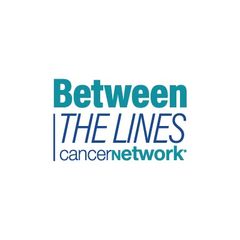
Clinical Implications of Real-World Amivantamab Data in NSCLC
Lung cancer experts discuss how these real-world data comparing amivantamab with alternative therapies may impact their clinical practice.
Episodes in this series

Transcript:
Joshua K. Sabari, MD: When we did this real-world analysis comparing amivantamab [Rybrevant] to these other regimens across the board looking at PFS [progression-free survival], OS [overall survival], time to next treatment, amivantamab seemed to be better than any of these other types of regimens. What do you think about that data? How does that apply to your clinical practice?
Helena A. Yu, MD: I think that obviously, prospective clinical trials are the gold standard, but I do really think that there is a place for these real-world analyses. I like that it was a very large study where each of those arms that you mentioned that you looked at there was sizeable, at least 50 or so in each arm up to almost 100. I also think that in terms of matching these groups, thinking about prior lines of treatment, brain metastases, age, performance status, all of that was done too because I think that’s the real question is thinking is there something unique about a clinical trial population that skews the data? But I think when you control it, you’re really trying to get the best kind of data in the real world.
Joshua K. Sabari, MD: Major criticism of real-world studies is that these are not randomized patients. These are patients that are selected from a database, but we can match them, and we can use propensity scores to match them to mimic randomization, and then we can also weigh different factors. We did look at multiple different lines of therapy, brain metastases, age, gender, etc., and across the board, it seems that amivantamab did better in subsets vs. these other commonly used regimens in clinical practice. One thing we did not look at is other TKIs [tyrosine kinase inhibitors], for example, that are EGFR exon 20 insertion mutation specific, and there are many in development right now. So that is something to obviously look at in the future.
How does this survival data in real-world analysis help change your mind in clinical practice? You mentioned you’re using amivantamab in the second line. But say you met a community oncologist who’s using chemo/IO [chemotherapy/immuno‑oncology], let’s say, or doce/ram [docetaxel/ramucirumab] in the second-line setting. How would you discuss that with them?
Helena A. Yu, MD: I think something that we often forget, because we have a bias of the patients that we see, is that there is a significant drop off from first- to second-line therapy and obviously kind of subsequent therapies beyond, and so really that feeling of each line, we want to pick the very best treatment for a patient because we might not have an opportunity to treat the cancer again. When I see this data, I see that there is a clear survival benefit as well as a clear progression-free survival benefit with amivantamab. I think it doesn’t take away from the fact that those other treatments that were used are part of our toolbox. But again, I think if there is a clear opportunity to treat more patients with something that’s more effective that would be what I would say is really just using our best treatments first and feeling confident that targeting EGFR exon 20 insertion mutations in that second-line setting is the best treatment.
Joshua K. Sabari, MD: You taught me that concept of using your best therapies upfront and that pertains to the frontline but clearly also the second-line setting. A lot of times we don’t know if patients are going to be well enough or if patients want further treatment in their disease setting. So I think that’s critical when we sit down with our patients, and really offer them the best possible therapies with the least side effects and hopefully the best quality of life.
Transcript edited for clarity.
Newsletter
Stay up to date on recent advances in the multidisciplinary approach to cancer.




















































































